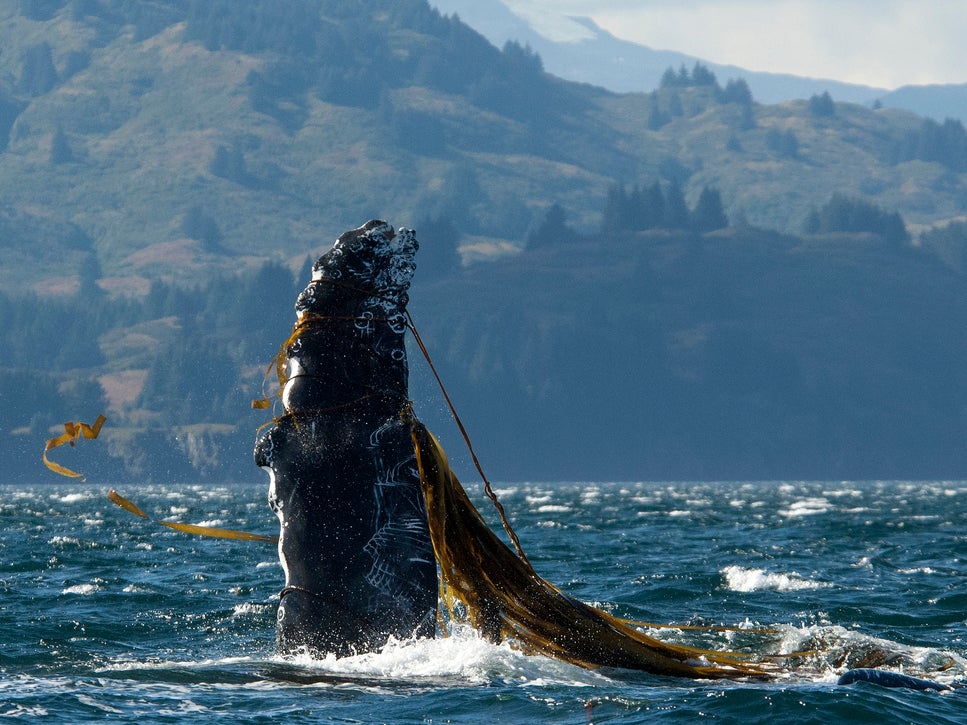Climate crisis: ‘Unprecedented’ ocean heatwaves led to record numbers of whale entanglements, study reveals
‘We are seeing changes coming at us in ways they never have before’

Your support helps us to tell the story
From reproductive rights to climate change to Big Tech, The Independent is on the ground when the story is developing. Whether it's investigating the financials of Elon Musk's pro-Trump PAC or producing our latest documentary, 'The A Word', which shines a light on the American women fighting for reproductive rights, we know how important it is to parse out the facts from the messaging.
At such a critical moment in US history, we need reporters on the ground. Your donation allows us to keep sending journalists to speak to both sides of the story.
The Independent is trusted by Americans across the entire political spectrum. And unlike many other quality news outlets, we choose not to lock Americans out of our reporting and analysis with paywalls. We believe quality journalism should be available to everyone, paid for by those who can afford it.
Your support makes all the difference.The warming of the oceans due to climate change may be helping to drive an “unprecedented” spike in the number of whales found entangled in fishing gear, scientists have said.
Increasing global average temperatures are believed to be responsible for increasing both the frequency and intensity of marine heatwaves. A major heatwave on the US west coast between 2014-16 saw record entanglements of humpback and other whales recorded.
The rise in entanglements is thought to have occurred because the warmer waters meant whales had moved to feed in an area closer to the coast which is used for crab fishing, according to a study published in the journal Nature.
The research team has called for new measures to alert fishermen to the risk of entanglements and help managers adjust to more rapid and frequent changes in the marine environment.
“With the ocean warming, we saw a shift in the ecosystem and in the feeding behaviour of humpback whales that led to a greater overlap between whales and crab fishing gear,” said Jarrod Santora, a research scientist at NOAA Fisheries’ Southwest Fisheries Science Centre (SWFSC) in Santa Cruz, California, and lead author of the research.
“We need to put information in the hands of those who can use it, at a time when it can make a difference,” he added. “We are seeing changes coming at us in ways they never have before.”
Dr Santora and his colleagues are developing a website that will use oceanographic data to forecast the areas where whales are most likely to be feeding off the US west coast.
Crab fishermen will then be able to use the information to help decide where, and where not, to set their traps. It may also help managers decide where and when to open or close fishing.
The numerous entanglements have prompted environmental lawsuits which threaten to restrict crab fishing. A focus on entanglements and better research into their causes has also led to improved communication between fishermen, environmental groups, and managers.
“If the working group knew then what we know now, it wouldn’t have happened,” said John Mellor, a crab fisherman from San Francisco, speaking about the increased entanglements. “The more we understand the whole picture, the better chance we have to mitigate the impacts.”
The marine heatwave which took hold in 2014 became known as “the warm blob”, because of the large expanse of unusually high temperatures that dominated waters off the west coast. Higher temperatures attracted subtropical species rarely seen in the region and the krill humpback whales typically feed on grew scarce.
The whales switched to feed instead on high concentrations of anchovy which the warm, less productive waters had squeezed into a narrow band near the coast.
At the same time, the higher temperatures fuelled a record bloom of toxic algae. This shut down crabbing on the west coast from November 2015 until March 2016. When toxin levels eased and the Dungeness season finally opened, fishermen set multitudes of crab traps in that same narrow band where many whales were feeding closer to shore.
NOAA Fisheries’ west coast region confirmed a then-record 53 whale entanglements in 2015 and 55 in 2016.
Research Biologist Karin Forney, also from the SWFSC and a co-author of the research, lives in Moss Landing, California. She has a view of Monterey Bay and has regularly seen humpback whales feeding just offshore. During the “blob” years, she would regularly see 30 to 40 whales from her front windows.
“In our lifetimes living here, that was unprecedented,” she said. “We knew something dramatically different was pulling these whales closer to shore.”
Dr Forney said the lesson of the research was that scientists and fishermen must share more information to help each other understand how complex environmental connections affect marine species and fisheries.
The research is published in Nature Communications.
Join our commenting forum
Join thought-provoking conversations, follow other Independent readers and see their replies
Comments